Last week I wrote about the tipping point that the National Electricity Market is facing. Beset by the early withdrawal of coal-fired plants, which still supply between 60 and 70 per cent of all the required electrons, there is a very real danger that the system will collapse without the required firming/dispatchable capacity. The best-case scenario is much higher prices and intermittent blackouts and brownouts, hardship for many consumers and the closure of energy-intensive businesses.
But I clearly spoke too soon because the announcements of Victorian Premier, Dan Andrews, in full election campaigning mode, made the dangers both more imminent and more serious. In his infinite wisdom – pause here for predictable chuckle – he has decided that he wants to recreate the state-owned State Electricity Commission which was broken up and sold off over 30 years ago, for seriously big bucks.
Now at the time, the SECV was a typical bloated bureaucracy whose operations included electricity generation, transmission and distribution, and retailing. Subject to frequent industrial action by the highly unionised workforce, it’s not clear that its demise was lamented by anyone with an interest in the delivery of efficient and affordable electricity in Victoria. Electricity prices fell significantly after the sale.
Towards the end of its existence, the SECV engaged in, or was forced to engage in, some dodgy dealings with the Cain/Kirner Labor government, including the raising of debt finance that was really just intended to cover the government’s daily expense needs. Those were the days.
But now Dan the Man has other ideas. He wants to resurrect the SECV, with the state government as majority owner and the other 49 per cent held by private interests. The intention is for the Victorian government to hand over $1 billion initially to the new organisation – which is peanuts, by the way, in this context. Mind you, given the heavy indebtedness of the Victorian government at the moment (over $160 billion), even another billion is a stretch.
As for the private partners, Dan has specified industry super funds as his preferred team mates. Evidently they have a social conscience and he thinks they will be interested in investing in renewable energy as well as delivering lower prices for Victorian consumers. Former federal treasurer, Wayne Swan – remember him, probably best to forget – who is now the ‘independent’ chair of one of the largest industry super funds, Cbus, was quick out of the blocks to endorse the idea.
But here’s the thing: superannuation funds are legally bound by a sole purpose test to maximise the retirement incomes of their members. There is nothing about having a social conscience, whatever that means. The very idea that a national industry super fund like Cbus would be interested in delivering lower electricity prices to Victorian consumers at the expense of investment returns should be quickly dismissed by all fund trustees.
This is yet another example of superannuation being used as a plaything by Labor governments. Albo and his team were initially very keen on the idea of industry super funds investing in social housing until it was pointed out to them that social housing involves below-market rents and is bound to make very low returns. It is interesting to note in this context that Homes Victoria, which manages Victoria’s social – once called public – housing stock, is completely broke and, by rights, should be declared insolvent.
Now apart from the thought-bubble of resurrecting the SECV, Dan thinks he’s on to a popular electoral pitch by upping the emissions-reduction targets of his state. He wants to legislate a cut of between 75 and 80 per cent by 2035 (from 2005) involving 95 per cent of electricity being generated in Victoria from renewable energy. And for good measure, the net-zero target will be brought forward to 2045.
You might think this is totally insane, but we must assume that the focus groups are telling his massive media department that this sort of ‘aggressive action against climate change’ still resonates with voters, particularly those in seats that might otherwise fall to the Greens or Teals. And while there have been some rises in electricity prices, they are small beer compared with what is to come.
Needless to say, all of Victoria’s coal-fired power plants will be closed by 2035, including the relatively new Long Yang A and Loy Yang B plants. In point of fact, these brown-coal-fired plants could prove extremely useful economically because brown coal is not a traded commodity and their principal input price is not affected by international events.
An economically rational option would be to keep them going and to buy offsets to accommodate them within an emissions-reduction framework. But ‘economically rational’ and ‘the Andrews’ government’, including the bungling energy minister, Lily D’Ambrosio, cannot be put into the one sentence.
Indeed, one of the most blatantly hypocritical decisions taken by any government has been the secret financial deal that the Victorian government has entered into with Energy Australia to pay the company to keep the brown-coal-fired Yallourn plant going until at least 2028. It is impossible to find out any details of the contract and the sum of monies involved. The suspicion is that the costs are being borne by taxpayers rather than electricity consumers.
When it came to the option of creating a capacity market for the broader NEM – the Yallourn deal is just a special capacity mechanism, after all – Victoria was loudest in its opposition, vetoing the use of any fossil fuels. At this stage, there is no prospect of a broader capacity market being introduced.
The hugely indebted Victorian government is also throwing money at the Marinus interconnector with Tasmania, notwithstanding the abundance of private investment money for regulated assets. It is also keen to rush the VNI-West Kerang link to New South Wales. Without being able to access electricity in greater licks from other states, even Andrews knows that Victoria is stuffed if his plans go ahead.
But just like you can’t hurry love, it’s impossible to hurry these large transmission projects, in part because of local objections and the need to obtain easements, but also because of shortages of materials and workers. Of course, Dan will be gone by the time the shit really hits the fan, probably chairing some industry super fund and meeting up with his wealthy mates.
The real tragedy however is the complete inability of the Victorian opposition to land a glove on him in the meantime.
Got something to add? Join the discussion and comment below.
Get 10 issues for just $10
Subscribe to The Spectator Australia today for the next 10 magazine issues, plus full online access, for just $10.
You might disagree with half of it, but you’ll enjoy reading all of it. Try your first month for free, then just $2 a week for the remainder of your first year.

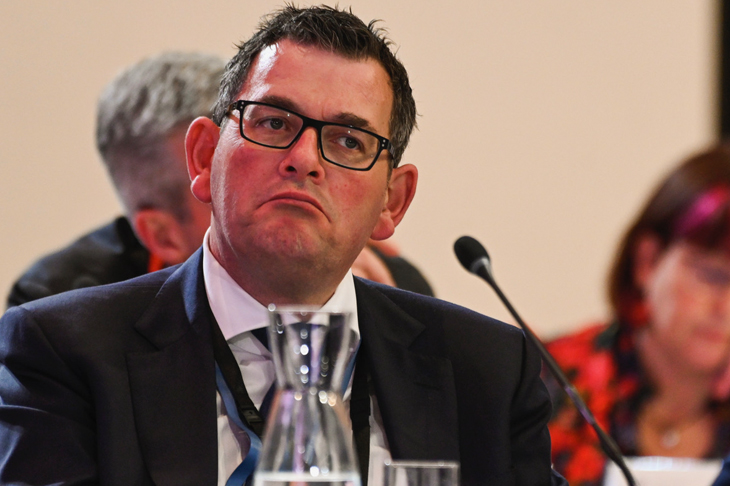
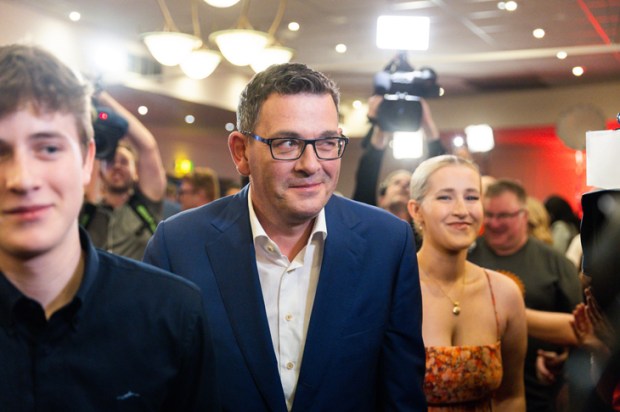
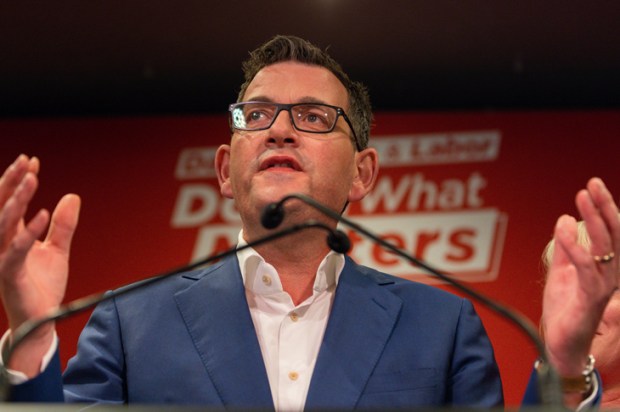
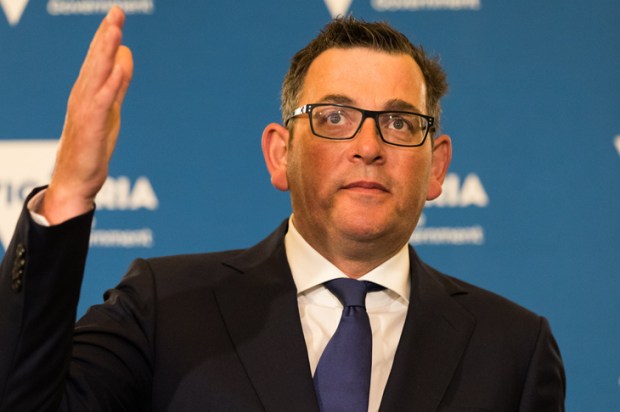
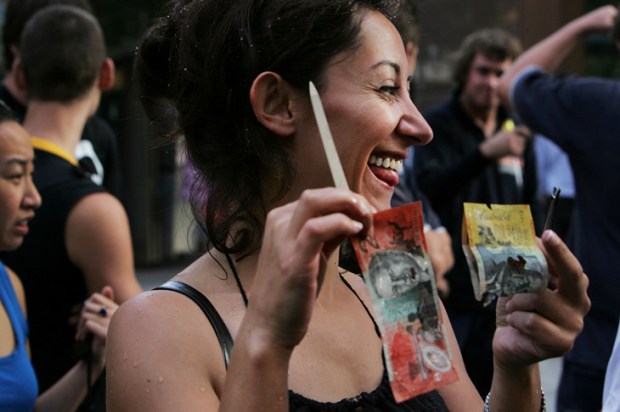
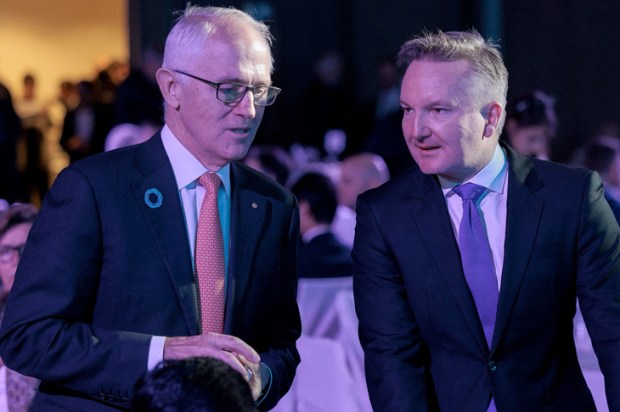
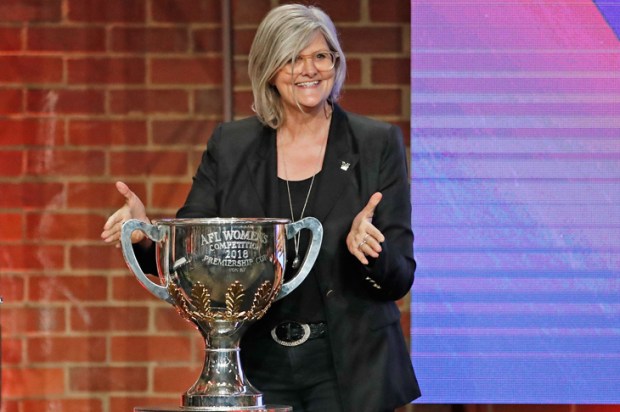






Comments
Don't miss out
Join the conversation with other Spectator Australia readers. Subscribe to leave a comment.
SUBSCRIBEAlready a subscriber? Log in